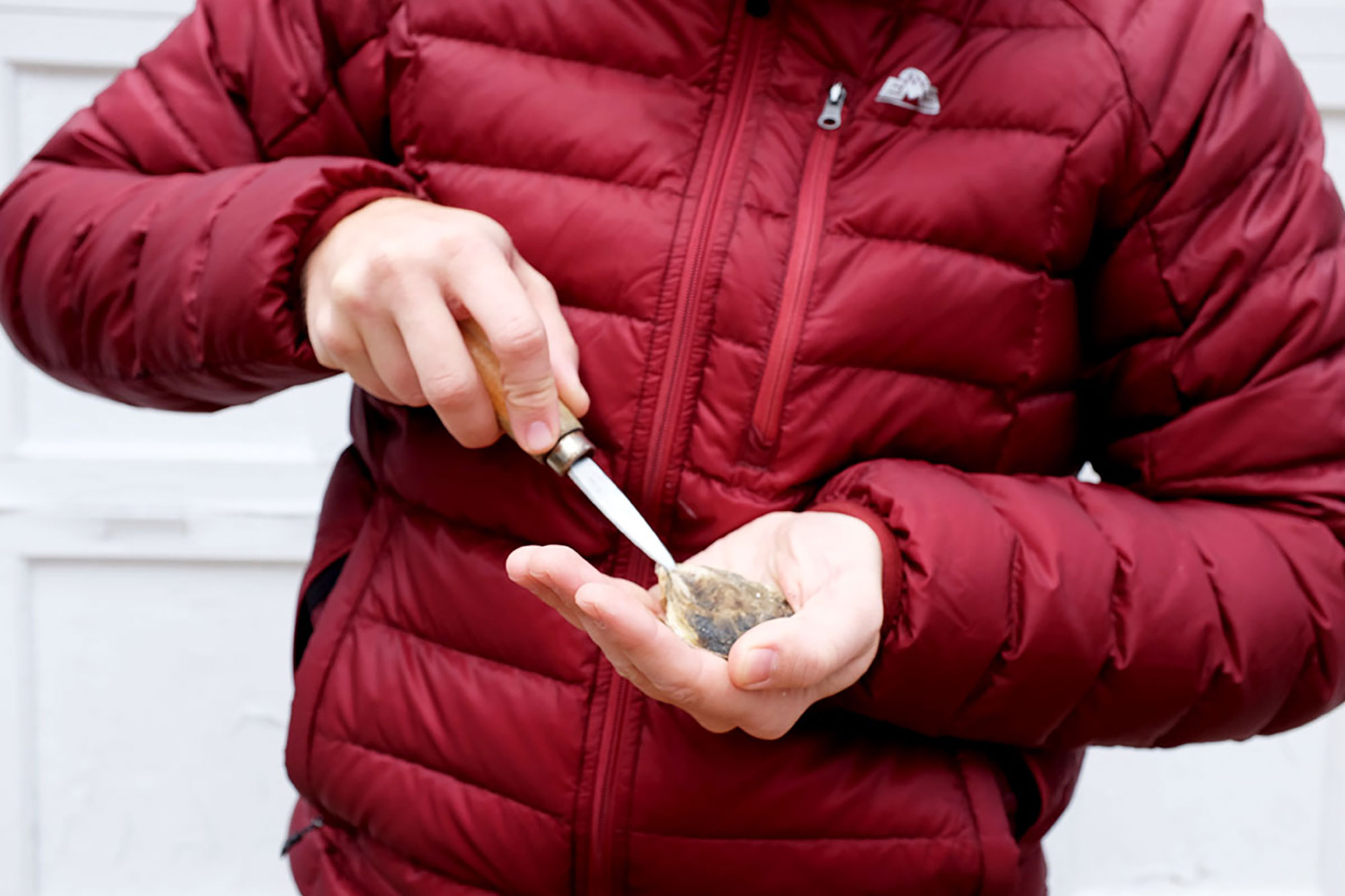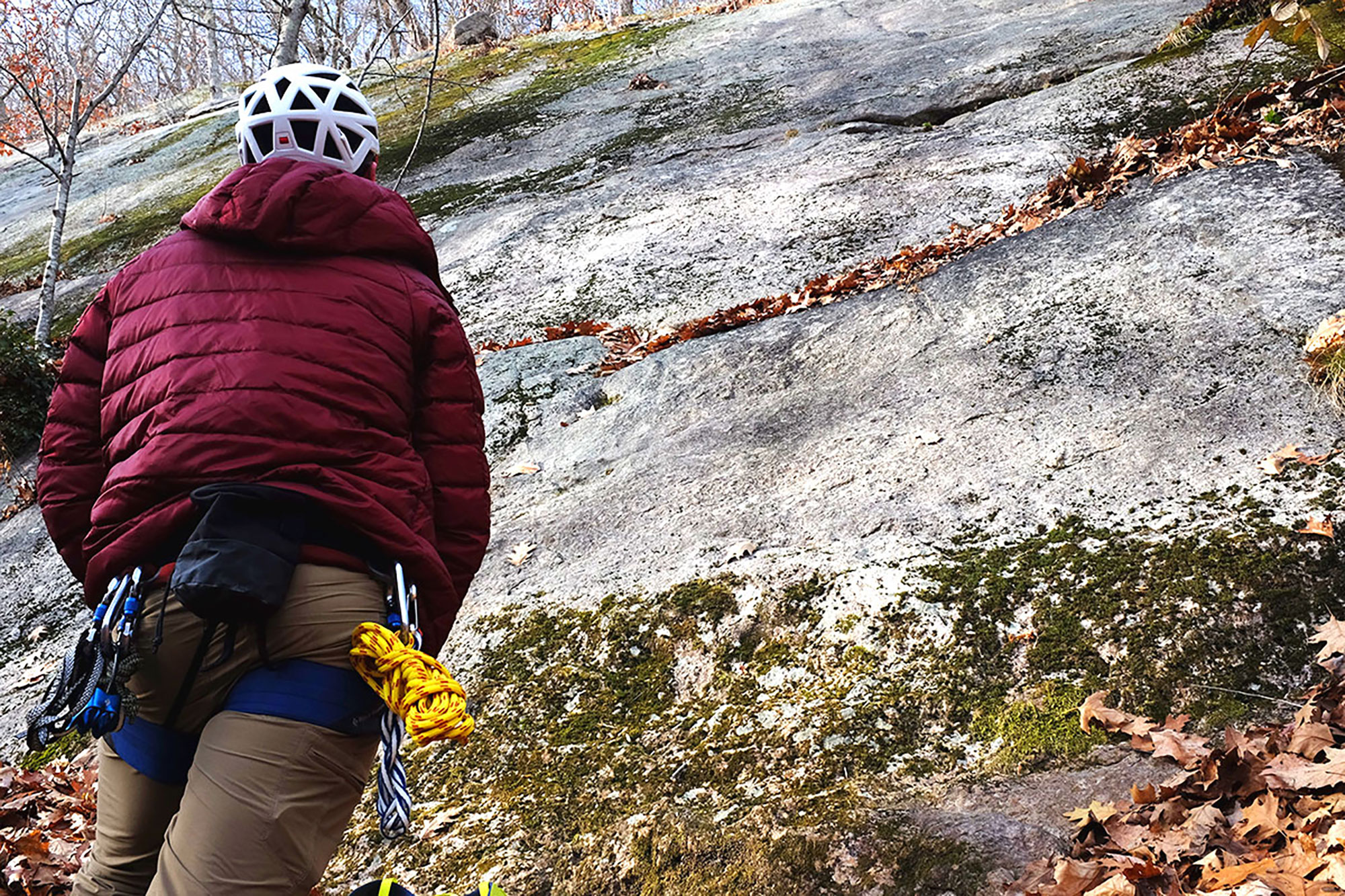When word came through that EMS was releasing a new and improved version of the Feather Pack jacket (men’s/women’s) to call me excited would be an understatement. I’d been eyeing a couple of down jackets for a while as an alternative to my synthetic puff jacket—to use as an insulating layer on colder hikes or as a belay jacket while ice climbing—and the Feather Pack appeared to fit the bill. It’s lightweight, packable, and warm. Moreover, it’s a handsome-looking jacket, as fit for a day in the mountains as a night on the town. This got me thinking: How can I appropriately test-drive such a versatile piece of outerwear?
Just like autumn in the Northeast, the week of Thanksgiving is a time of change. It opens with a bit of work, transitions into family time and a day of feasting, and culminates in the form of a beautiful long weekend—the perfect opportunity to get outside. And so, to put the Feather Pack to the test, I’ve invited it to Thanksgiving, adopting it as my go-to jacket for the week, to see how it performs in town and country alike.

Monday and Tuesday: Commute, Work, Commute Again
A short work week is a work week all the same, so Monday is about putting the Feather Pack to the test on my heavy-duty commute. From my home in the woods of western Connecticut, getting to my office in New York City each day is a haul. Being on time means leaving before the sun rises, and any outer layer I’m bringing along needs to deal with two different climates. The temperature in the city tends to be incrementally warmer so what works on a freezing-cold Metro-North platform may be a bit heavy once I get into town.
Good news for the Feather Pack—it’s lightweight and it packs down well so, when I needed to shed on the subway or the sidewalk, it fit right into my work bag.

Wednesday: Meal Prep
Each Thanksgiving, as sure as there is turkey and mashed potatoes, there’s an aspect of cooking Thanksgiving Dinner that moves the show outside. Occasionally, a warm fire or grill is involved, but more often than not, it’s shucking oysters and littlenecks en masse for a stuffing, a stew, or to just eat straight-up—this is New England, after all. It’s a bit wet and a bit cold so a warm layer is critical. The Feather Pack made a nice addition to this year’s wetter-than-usual shellfish prep session: the insulation did its job—I was toasty—and the durable water-resistant coating held up well against a little bit of rain.

Thursday: Run. Then Eat.
If you’re a glutton for punishment, the best way to kick off a day of overeating is with a little bit of exercise. Enter the traditional Thanksgiving morning road race. Since I’ve been running it, the Newtown Turkey Trot has been a cold affair, with temperatures rarely above freezing. Getting out of a warm bed and going out into that is a neat trick. I threw the Feather Pack on over my running clothes before leaving the house with a plan of wearing it until it was time to run and then throwing it back on once the race was through.
This year, while the day was a balmy 44° under partly cloudy skies, the wind was up and it felt a whole lot colder. The jacket was absolutely perfect during warm ups—super warm against the wind chill. Five kilometers later, it was back on again, keeping that body heat close.

Friday: Crag Day
The leftovers have been packed away, the kitchen is clean, and the day is free. With the masses in town, shopping their little hearts out, it’s finally time to get out and really run the Feather Pack through its paces. A couple of laps at the local crag are in order.
We headed up to Saint John’s Ledges in Kent to do some top roping on the long, slabby Upper Ledge. The Feather Pack, not nearly as weary as I from all of our activity the previous week, was again packed neatly into my bag.
Typical of late-season rock climbing in New England, it was cold, and once we reached the base of the ledges—accessed via a short, steep section of the Appalachian Trail—the Feather Pack came right out. It was handy keeping warm while setting up the anchors and belaying. The roomy hood—also very warm—fits over my helmet, a Black Diamond Vapor, quite comfortably as well.

Saturday: Family Time
Getting out needn’t be a physical challenge all the time, and more mellow terrain makes access easier for the whole family. A local park or preserve with some easy trails is a great way to be outside together. Connecticut’s share of the Appalachian Trail offers several easy, scenic stretches along the Housatonic River that fit the bill perfectly.
Being a cooler day on less trying ground gave me a good reason to try the Feather Pack in an active way. It also allowed me to try it on over a baby carrier, complete with a baby strapped to my chest. I’m happy to report that both the jacket and the baby provided ample warmth.

Sunday: Take a Hike
Closing the book on another successful Thanksgiving weekend also means the opening of the holiday season, and the countless tasks and to-do’s that come with it. A couple of miles in the woods is the perfect reset before diving into all of that.
An impending winter storm meant staying local, and getting out early. I hit the Zoar Trail, a 6.5-mile loop trail in Newtown’s Lower Paugussett State Forest. For a shorter trail, the Zoar Trail offers a little bit of everything: river views, a waterfall, rock hopping, and a decent bit of elevation gain—a good test for an insulating layer like the Feather Pack.
I donned the Feather Pack leaving the house and wore it on the ride out, packing it away at the trailhead. Hiking the Zoar Trail clockwise gets the majority of the climbing out of the way early. I hoofed it, trying to beat the storm. Near the crest of the last hill, I stopped, put the Feather Pack on, and took a breather. As it had all week, it delivered the warmth. I took a drink, had a quick snack, and moved on.
The second half of the loop trail skirts the edge of Lake Zoar. It’s generally flat, so I threw the jacket back on to finish the hike. Soon after, the freezing rain moved in, and I again got a chance to test out the DWR coating. A few miles later, I was warm, dry, and in my truck headed home to watch the snow.
Verdict
John Lepak
John Lepak is an art director, graphic designer, and weekend mountaineer. He hasn’t met a rock scramble he didn’t like, and spends his free time either in the mountains or obsessively cooking Mexican food. When John isn’t pushing pixels, crushing miles, or making the best carnitas caseras you’ve ever tasted, you can find him living the dream in the Connecticut woods with his family. Follow him at @jhlepak.




